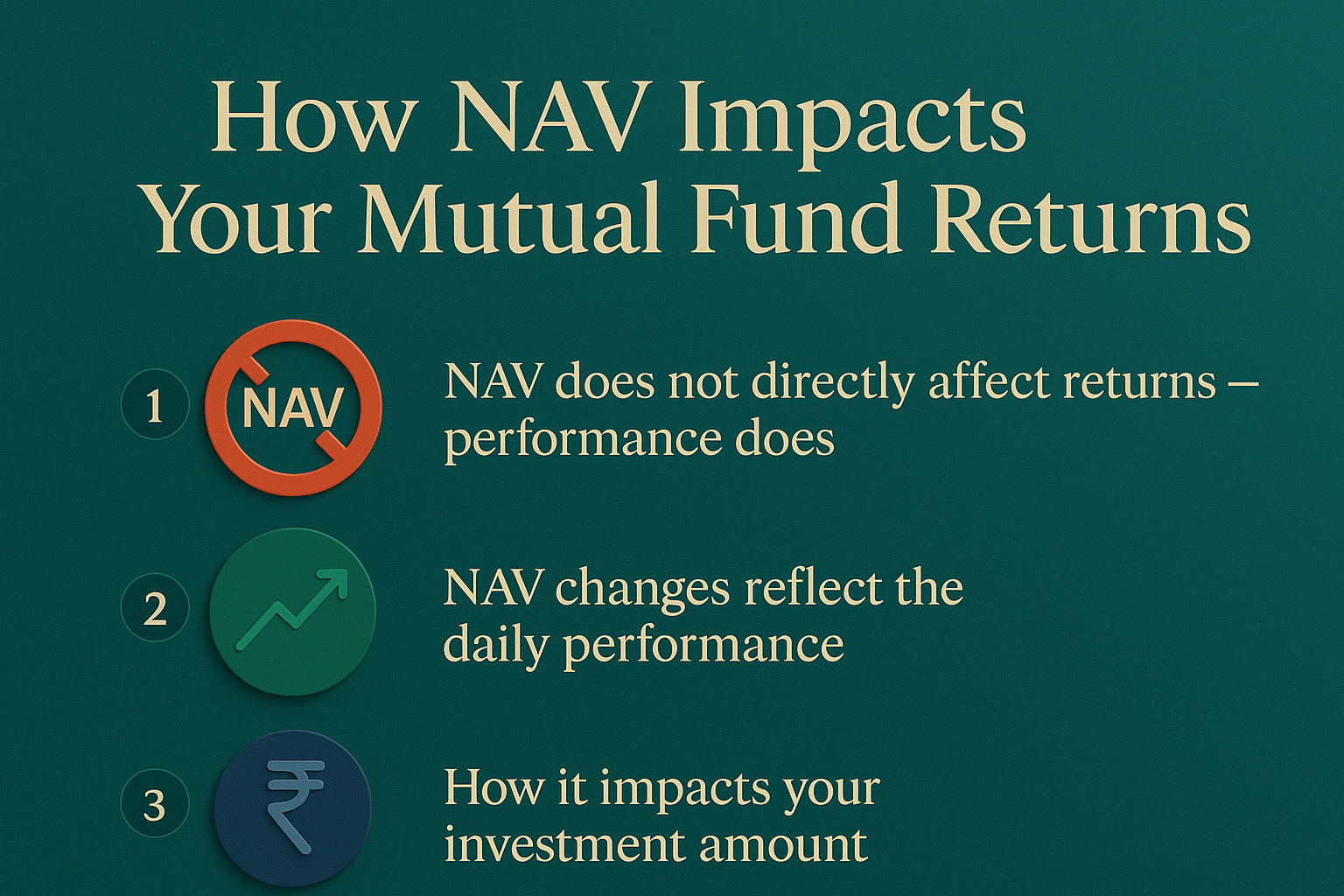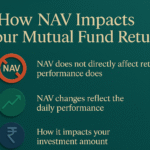
Introduction to Mutual Funds and Why People Invest in Them
Mutual funds are a popular investment choice for people looking to grow their money without directly managing stocks or bonds. A mutual fund pools money from many investors to buy a diversified portfolio of stocks, bonds, or other securities. This allows individuals to invest in a wide range of assets, even with a small amount of money, making it an accessible option for beginners and seasoned investors alike.
Why do people invest in mutual funds? The reasons are plenty. Mutual funds offer diversification, reducing the risk of losing money if one stock or bond performs poorly. They are managed by professional fund managers who make investment decisions on behalf of investors. Additionally, mutual funds are flexible, allowing investors to start with small amounts through Systematic Investment Plans (SIPs) or lump-sum investments. Whether you’re saving for retirement, a house, or your child’s education, mutual funds can help you achieve your financial goals over time.
One term you’ll often hear when investing in mutual funds is NAV, or Net Asset Value. But what exactly is NAV, and how does it affect your mutual fund returns? In this article, we’ll break down NAV in simple terms, explain its role in your investments, and clarify common misconceptions. By the end, you’ll understand how NAV works and what you should focus on to make smarter investment decisions.
- 1 What Is NAV (Net Asset Value)?
- 2 How Is NAV Calculated?
- 3 Why Does NAV Change Daily?
- 4 Common Misconceptions About NAV
- 5 How NAV Influences Buying and Selling Units
- 6 Comparing Two Funds with Different NAVs
- 7 How Systematic Investment Plans (SIPs) Work with NAV
- 8 What Should Investors Focus on Instead of NAV?
- 9 Frequently Asked Questions (FAQs)
- 10 Conclusion: Invest Wisely for a Brighter Future
What Is NAV (Net Asset Value)?
Defining NAV in Simple Terms
Net Asset Value, or NAV, is the price per unit of a mutual fund. Think of it as the “value” of one share of the mutual fund at a given time. It represents the total value of all the assets in the fund’s portfolio, minus any liabilities, divided by the number of units outstanding.
In simpler words, NAV tells you how much each unit of the mutual fund is worth. For example, if a mutual fund’s NAV is ₹100, one unit of that fund costs ₹100. When you invest in a mutual fund, your money buys a certain number of units based on the NAV at that time.
How Is NAV Calculated?
The formula for calculating NAV is straightforward:
NAV = (Total Assets – Total Liabilities) ÷ Number of Units Outstanding
Let’s break it down with an example:
- A mutual fund has a portfolio of stocks and bonds worth ₹10 crore (total assets).
- The fund has liabilities, like management fees or other expenses, worth ₹50 lakh.
- The fund has issued 10 lakh units to investors.
To calculate the NAV:
- Subtract liabilities from assets: ₹10 crore – ₹50 lakh = ₹9.5 crore.
- Divide by the number of units: ₹9.5 crore ÷ 10 lakh = ₹95.
So, the NAV of this mutual fund is ₹95 per unit.
Why Does NAV Matter?
NAV is important because it determines how many units you get when you invest and how much money you receive when you redeem (sell) your units. However, as we’ll see later, NAV alone doesn’t tell the whole story about a fund’s performance or potential.
Why Does NAV Change Daily?
Mutual fund NAV changes every day because the value of the fund’s underlying assets (like stocks or bonds) fluctuates with market conditions. Here are the key factors that cause NAV to change:
1. Market Value of Assets
The biggest driver of NAV changes is the market value of the securities in the fund’s portfolio. If the stocks or bonds held by the fund increase in value, the NAV rises. If they fall, the NAV drops.
2. Fund Expenses
Mutual funds charge fees, such as management fees, administrative costs, and marketing expenses. These are deducted from the fund’s assets, slightly reducing the NAV. The expense ratio, expressed as a percentage, indicates how much of the fund’s assets are used for these costs.
3. Dividends and Interest
If the fund earns dividends from stocks or interest from bonds, these are added to the fund’s assets, increasing the NAV. However, if the fund distributes dividends to investors, the NAV decreases by the amount paid out.
4. Inflows and Outflows
When new investors buy units, the fund receives more money, increasing its assets. Similarly, when investors redeem units, the fund sells assets to pay them, reducing the total assets. These changes can slightly affect the NAV.
Example of Daily NAV Change
Suppose a mutual fund’s NAV is ₹100 on Monday. If the stock market rises and the fund’s portfolio gains 2% in value, the NAV might increase to ₹102 by Tuesday, assuming no other changes. However, if the fund pays out a ₹1 dividend per unit, the NAV would drop to ₹101.
Common Misconceptions About NAV
Many beginners misunderstand NAV and make investment decisions based on myths. Let’s clear up some common misconceptions:
1. Lower NAV Means a Cheaper Fund
A common myth is that a fund with a lower NAV is a better deal because you can buy more units for the same amount. For example, if Fund A has an NAV of ₹20 and Fund B has an NAV of ₹200, you might think Fund A is “cheaper.” However, the number of units you own doesn’t determine your returns—your returns depend on the percentage growth of the NAV.
2. Higher NAV Means a Better Fund
Similarly, some investors believe a high NAV indicates a superior fund. In reality, a high NAV could simply mean the fund has been around longer or has grown steadily. It doesn’t guarantee future performance.
3. NAV Determines Returns
NAV itself doesn’t determine your returns. Returns depend on how much the NAV grows over time, not its absolute value. A fund with a low NAV can perform poorly, while a high-NAV fund can deliver strong returns.
How NAV Influences Buying and Selling Units
NAV plays a key role when you buy or sell mutual fund units. Let’s see how:
Buying Units
When you invest in a mutual fund, your money is divided by the fund’s NAV to determine how many units you receive. For example:
- You invest ₹10,000.
- The fund’s NAV is ₹50.
- You get: ₹10,000 ÷ ₹50 = 200 units.
Selling (Redeeming) Units
When you redeem your units, the fund multiplies the number of units by the current NAV to calculate your payout. For example:
- You sell 200 units.
- The NAV at the time of redemption is ₹60.
- You receive: 200 × ₹60 = ₹12,000.
Impact on Returns
Your returns depend on the difference between the NAV when you buy and the NAV when you sell, multiplied by the number of units. For instance, in the above example:
- Buying NAV: ₹50.
- Selling NAV: ₹60.
- Gain per unit: ₹60 – ₹50 = ₹10.
- Total gain: 200 units × ₹10 = ₹2,000.
- Return percentage: (₹2,000 ÷ ₹10,000) × 100 = 20%.
This shows that the percentage increase in NAV, not its absolute value, determines your returns.
Comparing Two Funds with Different NAVs
To illustrate that NAV doesn’t affect returns, let’s compare two hypothetical mutual funds with different NAVs but the same percentage growth.
| Fund | Initial NAV | Investment Amount | Units Purchased | Final NAV (after 1 year) | Final Value | Returns (%) |
|---|---|---|---|---|---|---|
| Fund A | ₹20 | ₹10,000 | 500 units | ₹24 | ₹12,000 | 20% |
| Fund B | ₹200 | ₹10,000 | 50 units | ₹240 | ₹12,000 | 20% |
Explanation
- Fund A: You invest ₹10,000 at an NAV of ₹20, getting 500 units. After one year, the NAV rises by 20% to ₹24. Your investment is now worth 500 × ₹24 = ₹12,000.
- Fund B: You invest ₹10,000 at an NAV of ₹200, getting 50 units. The NAV also rises by 20% to ₹240. Your investment is worth 50 × ₹240 = ₹12,000.

Both funds deliver the same 20% return, despite having different NAVs. This proves that NAV doesn’t impact returns—what matters is the percentage growth in NAV.
How Systematic Investment Plans (SIPs) Work with NAV
Systematic Investment Plans (SIPs) are a popular way to invest in mutual funds by investing a fixed amount regularly, such as monthly. NAV plays a role in SIPs because it determines how many units you get each month.
Rupee Cost Averaging
SIPs benefit from a concept called rupee cost averaging. When the NAV is low, you buy more units with the same amount. When the NAV is high, you buy fewer units. Over time, this averages out the cost per unit, reducing the impact of market volatility.
Example of Rupee Cost Averaging
Suppose you invest ₹5,000 monthly in a mutual fund via an SIP for 3 months:
- Month 1: NAV = ₹100. Units bought = ₹5,000 ÷ ₹100 = 50 units.
- Month 2: NAV = ₹80 (market dips). Units bought = ₹5,000 ÷ ₹80 = 62.5 units.
- Month 3: NAV = ₹120 (market rises). Units bought = ₹5,000 ÷ ₹120 = 41.67 units.
Total:
- Investment: ₹15,000.
- Units bought: 50 + 62.5 + 41.67 = 154.17 units.
- Average cost per unit: ₹15,000 ÷ 154.17 = ₹97.29.
If you had invested ₹15,000 as a lump sum in Month 1 (NAV = ₹100), you’d have 150 units. With SIPs, you get more units (154.17) at a lower average cost (₹97.29), thanks to rupee cost averaging.
What Should Investors Focus on Instead of NAV?
While NAV is important for buying and selling units, it’s not the only factor to consider when choosing a mutual fund. Here are key factors to focus on:
1. Past Performance
Check the fund’s historical returns over 3, 5, or 10 years. Consistent performance is a better indicator than a single year’s returns.
2. Fund Manager’s Track Record
A skilled fund manager can make a big difference. Research their experience and how they’ve managed the fund during market ups and downs.
3. Expense Ratio
The expense ratio is the annual fee charged by the fund. A lower expense ratio means more of your money stays invested, boosting long-term returns.
4. Asset Allocation
Understand the fund’s portfolio. Does it invest in stocks, bonds, or a mix? Does it align with your risk tolerance and goals?
5. Risk Profile
Every fund has a risk level (low, moderate, or high). Choose a fund that matches your comfort with risk.
6. Investment Goals
Pick a fund that aligns with your financial goals, whether it’s wealth creation, retirement, or short-term savings.
By focusing on these factors, you’ll make better investment decisions than simply chasing a low or high NAV.
Frequently Asked Questions (FAQs)
1. What Is a Good NAV for Mutual Funds?
There’s no such thing as a “good” or “bad” NAV. A fund’s NAV doesn’t indicate its quality or future returns. Instead, focus on the fund’s performance, expense ratio, and alignment with your goals.
2. Does Higher NAV Mean Higher Returns?
No, a higher NAV doesn’t guarantee better returns. Returns depend on the percentage growth of the NAV, not its absolute value. A fund with a high NAV can underperform, while a low-NAV fund can deliver strong returns.
3. How Can I Track NAV?
You can track a mutual fund’s NAV on:
- The fund house’s official website.
- Financial apps like Moneycontrol or Groww.
- Daily updates from AMFI (Association of Mutual Funds in India).
- Your investment platform or demat account.
Conclusion: Invest Wisely for a Brighter Future
Understanding NAV is an essential part of investing in mutual funds, but it’s not the whole story. NAV helps you calculate how many units you buy or sell, but it doesn’t determine your returns. Instead of fixating on NAV, focus on the fund’s performance, expense ratio, and alignment with your financial goals. Tools like SIPs can help you take advantage of market fluctuations through rupee cost averaging, making mutual funds a smart choice for long-term wealth creation.
Investing can feel overwhelming, especially for beginners. If you’re unsure where to start, consider consulting a certified financial advisor who can guide you based on your risk tolerance and goals. By staying informed and making thoughtful decisions, you can build a brighter financial future with mutual funds.


